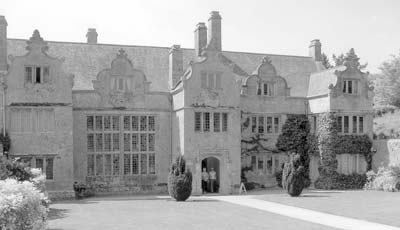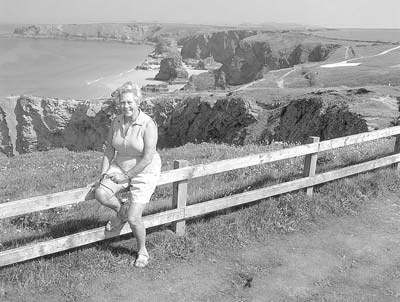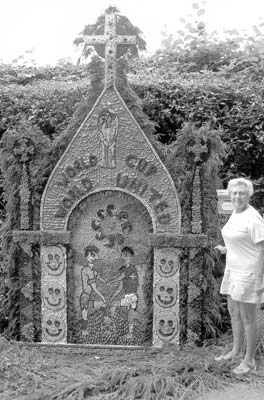National Trust hotels in Great Britain
The National Trust (Box 39, Warrington, WA5 7WD, UNITED KINGDOM; phone 0870 458 4000 or visit www. nationaltrust. org.uk), founded in 1895, owns many historic properties (houses, manor houses, abbeys, etc.) across England and Wales as well as properties of natural beauty, most of which are open to the public for a small admission fee.

In addition to the Trust’s conservation and restoration activities, The National Trust Holiday Cottages (Box 536, Melksham, Wiltshire SN12 8SX, U.K.; phone 0870 458 4422, fax 4400 or visit www.nationaltrustcottages.co.uk) lists more than 300 unique cottages, houses and apartments that can be rented, generally by the week, for a self-catering holiday. (Call the Trust or visit the website for a brochure [£5, about $9.50] listing the properties or search the site for any of the properties by name or area.)
My wife, Margaret, and I have been members of the Trust for several years, but you don’t need to be a member to rent one of their properties. Membership for a senior couple costs about £40 ($76) a year. Members usually don’t pay admission fees at National Trust sites.
We’ve rented at least eight of these cottages over the years and in June ’06 we did it again. We flew into Bristol in the southwest of England on one of Continental Airlines’ new international routes. We found a good business-class fare of $2,350 each from Houston via Newark. Bristol airport is rather small but user-friendly, and I would strongly recommend it for anyone wising to avoid London airports.
We landed at 8:30 a.m. and by 9:05 were in our rental car traveling south on the A38 to the M5 and Cornwall.
• We stayed a week at Trerice, a 16th-century manor house built for Sir John Arundell and located at Kestle Mill near Newquay, Cornwall. This was our second visit to Trerice. We were in the West Wing, a 19th-century addition built to accommodate farm workers and with its own entrance.
We had a twin bedroom with a private bath (shower and bathtub), a fully equipped kitchen and a sitting/dining room for £518 ($985) a week. Rates for the West Wing ranged from £257 to £759 ($489-$1,443) — least expensive the first week of January and most expensive in August.

Rental rates for all of the properties vary depending on time of year. Weekly rentals for the whole 300-plus National Trust properties range from £218 to £2,322 ($414-$4,414) per week.
In Cornwall there is much to see and do. Walks along the coastal path are one of our favorite activities and we managed this every day in beautiful weather. There are also many houses and gardens to visit as well as landmarks such as Land’s End and the Lizard.
While we were there the tides were very low early in the morning, which made it possible to walk on the beach for more than two hours at a time. We could walk near the Bedruthan Steps (rock stacks), which before we had seen only at high tide.
• From Cornwall we headed north to Derbyshire and Ticknall Lodge, a gatehouse of Calke Abbey, located at the southern end of the Peak District National Park. This lodge was built in 1806 and is listed as a Grade Two building (that means the outside can’t be altered in appearance, although the interior may be refurbished). Our lodge accommodation was a 2-story affair with a double bedroom and bath upstairs and living room, dining room/kitchen downstairs. The weekly rental price was £560 ($1,065).
Calke Abbey is not really an abbey at all. Rather, it is an English country house built in 1701 for the Harpur-Crewe family, one member of which was later made a hereditary baronet. The house passed into the National Trust on the death of the last baronet in 1924. The Trust keeps the house as an example of the English country house in decline, which we found somewhat depressing.

While in Derbyshire we visited Hartington, one of the few places that makes genuine Stilton cheese. There are no factory tours, but there is a shop that sells a wide variety of the local cheese. We also were able to walk in Dovedale, but in general the weather was not as good as on the earlier portion of our trip.
We visited two memorable stately homes. The first, Kedleston Hall, is a National Trust property that belonged to the Curzon family. The museum there contains a remarkable collection of Eastern objects acquired by Lord Curzon when he was Viceroy of India. At Kedleston we stumbled on a military reenactment between British redcoats and Scot Jacobites, apparently related to the 18th-century push by Bonnie Prince Charlie to assert his right to the British throne.
The second stately home was Chatsworth, home of the Duke and Duchess of Devonshire, who still occupy the property. Chatsworth has a magnificent art collection, and parts of it were recently used in the movie “Pride and Prejudice.”
A sight unique to Derbyshire is the “well dressing,” and we visited several of them. These involve village wells that during the months of June and July each are decorated with cut flowers arranged to form a scene, often (but not always) of a Biblical topic. The decorations last about seven days before the flowers wilt.
We spent the last few days of our trip as guests of friends in Appledore, Devon, on the banks of the River Torridge, a haven for sailors both experienced and novice.
• One last tip that may be useful for visitors to the U.K. — we found that the best exchange rate was at Marks & Spencer stores. During our trip, the exchange at the airport was $1.89 to £1; at Marks & Spencer it was $2.10 per pound. Not every M&S store has a foreign exchange department, but those in areas generally visited by tourists do.
BOB DEAR
The Woodlands, TX
